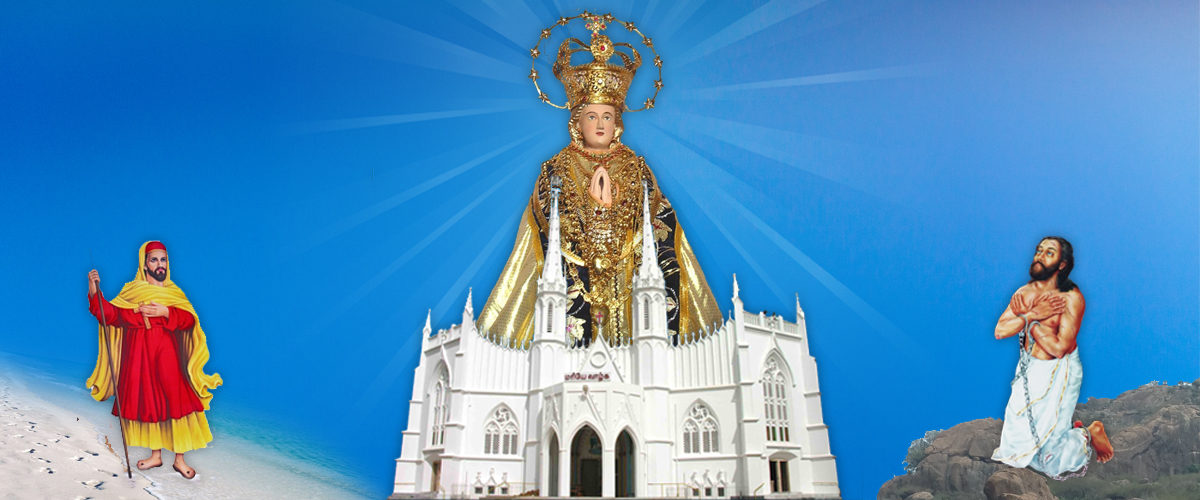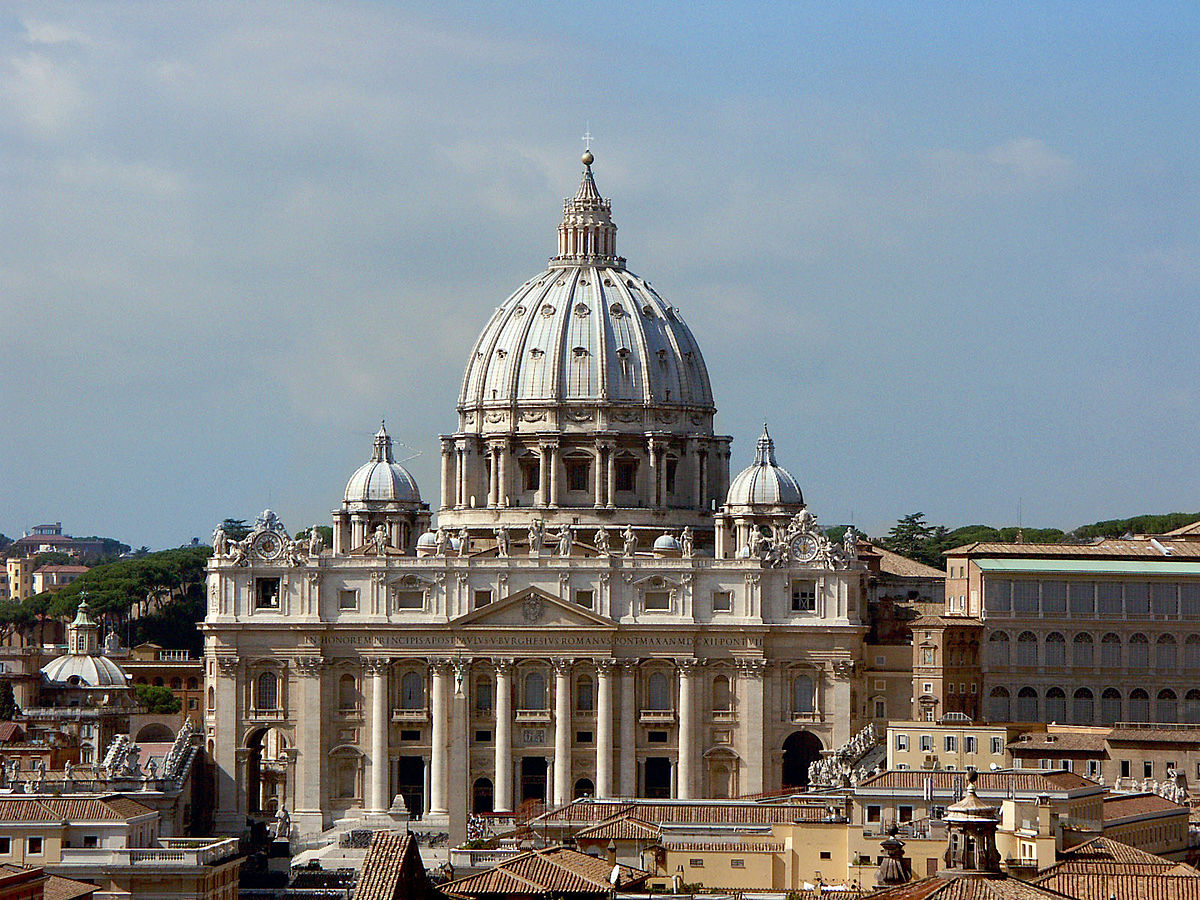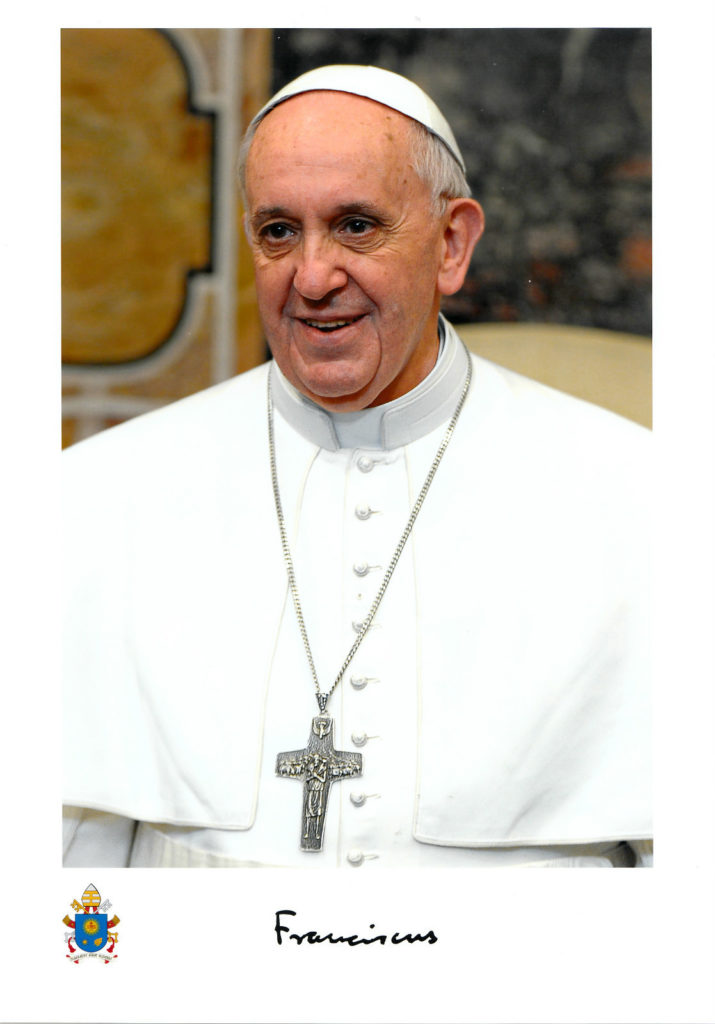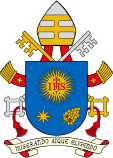
| Classification | Catholicism |
|---|---|
| Polity | Episcopal[1] |
| Head | Pope Francis |
| Administration | Holy See via the Roman Curia |
| Particular churches |
Churches sui iuris[note 1] • Latin • Eastern Catholic (23) Diocesan • Archdioceses (640) • Regular dioceses (2,851) |
| Region | Worldwide |
| Headquarters | Vatican City |
| Founder | Jesus Christ, according to Catholic tradition |
| Origin | 1st century Jerusalem, Judea, Roman Empire |
| Members | 1.27 billion[3] |
| Clergy | Bishops: 5,237 Priests: 415,792 Deacons: 44,566 |
The Catholic Church, also known as the Roman Catholic Church, is the largest Christian church, with more than 1.27 billion members worldwide. As one of the oldest religious institutions in the world, it has played a prominent role in the history of Western civilisation. Headed by the Bishop of Rome, known as the pope, its doctrines are summarised in the Nicene Creed. The Catholic Church is notable within Western Christianity for its sacred traditionand seven sacraments.
The Catholic Church teaches that it is the one true church founded by Jesus Christ,[6][note 2][9] that its bishops are the successors of Christ’s apostles, and that the pope is the successor to Saint Peter. The Catholic Church maintains that the doctrine on faith and morals that it declares as definitive is infallible. The Latin Church, the Eastern Catholic Churches, as well as institutes such as mendicant orders and enclosed monastic orders, reflect a variety of theological and spiritual emphases in the Church.
Of the seven sacraments, the principal one is the Eucharist, celebrated liturgically in the Mass. The church teaches that through consecration by a priest the sacrificial bread and wine become the body and blood of Christ. The Catholic Church practises closed communion, with only baptised members in a state of grace ordinarily permitted to receive the Eucharist.
Mary is venerated in the Catholic Church as Queen of Heaven and honoured in numerous Marian devotions. The Catholic Church has defined four Marian dogmas: the Immaculate Conception, the dogma that Mary was conceived without original sin; her status, as the mother of Jesus, of Mother of God; her perpetual virginity; and her bodily assumption into Heaven at the end of her earthly life.
Catholic spiritual teaching includes spreading the Gospel while Catholic social teaching emphasises support for the sick, the poor and the afflicted through the corporal works of mercy. The Catholic Church is the largest non-government provider of education and medical services in the world.
Organisation
The leadership of the Catholic Church is hierarchical, led by clergy who have received the sacrament of Holy Orders who are given formal jurisdictions of governance within the church.[31][32] There are three levels of clergy, the episcopate (bishops), whose members are given a geographical jurisdiction called a diocese or eparchy; the presbyterate (priests), who serve the bishops or other superiors, often by leading local parishes; and the diaconate (deacons), who serve the bishops and priests in a variety of ministerial roles. Ultimately leading the entire Catholic Church is the Bishop of Rome, commonly called the pope, whose jurisdiction is called the Holy See. In parallel to the diocesan structure are a variety of religious institutes that function autonomously, often subject only to the authority of the pope, though sometimes subject to the local bishop. Most religious institutes only have male or female members but some have both. Additionally, lay members aid many liturgical functions during worship services.
Dioceses, parishes and religious institutes
Individual countries, regions, or major cities are served by particular churches known as dioceses or eparchies, each overseen by a bishop. Each diocese is united with one of the worldwide sui iuris particular churches such as the Latin Church or one of the Eastern Catholic churches. In 2008, the Catholic Church had 2,795 dioceses.[66] The bishops in a particular country are members of a national or regional episcopal conference.[67]
Dioceses are divided into parishes, each with one or more priests, deacons or lay ecclesial ministers.[68] Parishes are responsible for the day to day celebration of the sacraments and pastoral care of the laity.[69]
In the Latin Church, Catholic men may serve as deacons or priests by receiving sacramental ordination. Men and women may serve as extraordinary ministers of Holy Communion, as readers (lectors); or as altar servers. Historically, boys and men have only been permitted to serve as altar servers; however, since the 1990s, girls and women have also been permitted.[70][note 8]
Ordained Catholics, as well as members of the laity, may enter into consecrated life either on an individual basis, as a hermit or consecrated virgin, or by joining an institute of consecrated life (a religious institute or a secular institute) in which to take vows confirming their desire to follow the three evangelical counsels of chastity, poverty and obedience.[71] Examples of institutes of consecrated life are the Benedictines, the Carmelites, the Dominicans, the Franciscans, the Missionaries of Charity, the Legionaries of Christ and the Sisters of Mercy.[71]
“Religious institutes” is a modern term encompassing both “religious orders” and “religious congregations” which were once distinguished in canon law.[72] The terms “religious order” and “religious institute” tend to be used as synonyms colloquially.[73]
Nature of the church
The Catholic Church teaches that it is the “one true church”,[6][94] “the universal sacrament of salvation for the human race”,[95][96] and “the one true religion”.[97]According to the Catechism, the Catholic Church is further described in the Nicene Creed as the “one, holy, catholic, and apostolic Church”.[98] These are collectively known as the Four Marks of the Church. The church teaches that its founder is Jesus Christ.[99][100] The New Testament records several events considered integral to the establishment of the Catholic Church, including Jesus’ activities and teaching and his appointment of the apostles as witnesses to his ministry, suffering, and resurrection. The Great Commission, after his resurrection, instructed the apostles to continue his work. The coming of the Holy Spirit upon the apostles, in an event known as Pentecost, is seen as the beginning of the public ministry of the Catholic Church.[101] The church teaches that all duly consecrated bishops have a lineal succession from the apostles of Christ, known as apostolic succession.[102] In particular, the Bishop of Rome (the pope) is considered the successor to the apostle Simon Peter, a position from which he derives his supremacy over the Church.[103]
Catholic belief holds that the Church “is the continuing presence of Jesus on earth”[104] and that it alone possesses the full means of salvation.[105] Through the passion(suffering) of Christ leading to his crucifixion as described in the Gospels, it is said Christ made himself an oblation to God the Father in order to reconcile humanity to God;[106] the Resurrection of Jesus makes him the firstborn from the dead, the first among many brethren.[107] By reconciling with God and following Christ’s words and deeds, an individual can enter the Kingdom of God.[108] The Church sees its liturgy and sacraments as perpetuating the graces achieved through Christ’s sacrifice to strengthen a person’s relationship with Christ and aid in overcoming sin.[14]

Jorge Mario Bergoglio was born on 17 December 1936 in Flores,[3] a neighborhood of Buenos Aires. He was the eldest[4]of five children of Mario José Bergoglio (1908–1959) and Regina María Sívori (1911–1981). Mario Bergoglio was an Italian immigrant accountant[5] born in Portacomaro (Province of Asti) in Italy’s Piedmont region. Regina Sívori[6] was a housewife born in Buenos Aires to a family of northern Italian (Piedmontese-Genoese) origin.[7][8][9] Mario José’s family left Italy in 1929, to escape the fascist rule of Benito Mussolini.[10] María Elena Bergoglio, the Pope’s only living sibling, confirmed that their emigration was not for economic reasons.[11] His other siblings were Alberto Horacio, Oscar Adrián and Marta Regina.[12] Two great-nephews, Antonio and Joseph, died in a traffic collision.[13][14]
In the sixth grade, Bergoglio attended Wilfrid Barón de los Santos Ángeles, a school of the Salesians of Don Bosco, in Ramos Mejía, Buenos Aires. He attended the technical secondary school Escuela Técnica Industrial N° 27 Hipólito Yrigoyen,[15] named after a past President of Argentina, and graduated with a chemical technician’s diploma.[16][17] He worked for a few years in that capacity in the foods section at Hickethier-Bachmann Laboratory[18] where his boss was Esther Ballestrino. Before joining the Jesuits, Bergoglio worked as a bar bouncer and as a janitor sweeping floors, and he also ran tests in a chemical laboratory.[19][20]
In the only known health crisis of his youth, at the age of 21 he suffered from life-threatening pneumonia and three cysts. He had part of a lung excised shortly afterwards.[15][21] Bergoglio has been a lifelong supporter of San Lorenzo de Almagro footballclub.[22] Bergoglio is also a fan of the films of Tita Merello,[23] neorealism, and tango dancing, with an “intense fondness” for the traditional music of Argentina and Uruguay known as the milonga.[23]
Pre-papal career, 1958–2013
Jesuit (1960–1992)
Bergoglio found his vocation to the priesthood while he was on his way to celebrate the Spring Day. He passed by a church to go to confession, and was inspired by the priest.[25] Bergoglio studied at the archdiocesan seminary, Inmaculada Concepción Seminary, in Villa Devoto, Buenos Aires, and, after three years, entered the Society of Jesus as a novice on 11 March 1958.[23] Bergoglio has said that, as a young seminarian, he had a crush on a girl he met and briefly doubted about continuing the religious career.[26] As a Jesuit novice he studied humanities in Santiago, Chile.[27] At the conclusion of his novitiate in the Society of Jesus, Bergoglio officially became a Jesuit on 12 March 1960, when he made the religious profession of the initial, perpetual vows of poverty, chastity and obedience of a member of the order.[28][29]
In 1960, Bergoglio obtained a licentiate in philosophy from the Colegio Máximo de San José in San Miguel, Buenos Aires Province. He taught literature and psychologyat the Colegio de la Inmaculada Concepción, a high school in Santa Fe, from 1964 to 1965. In 1966 he taught the same courses at the Colegio del Salvador in Buenos Aires.[30] In 1967, Bergoglio finished his theological studies and was ordained to the priesthood on 13 December 1969, by Archbishop Ramón José Castellano. He attended the Facultades de Filosofía y Teología de San Miguel (Philosophical and Theological Faculty of San Miguel), a seminary in San Miguel. He served as the master of novices for the province there and became a professor of theology.[31]
Bergoglio completed his final stage of spiritual training as a Jesuit, tertianship, at Alcalá de Henares, Spain. He took the final fourth vow (obedience to the pope) in the Society of Jesus on 22 April 1973.[29] He was named provincial superior of the Society of Jesus in Argentina on 31 July 1973 and served until 1979.[32] He made a pilgrimage to Jerusalem in 1973, shortly after being named provincial superior, but his stay was shortened by the outbreak of the Yom Kippur War.[33] After the completion of his term of office, in 1980 he was named the rector of the Philosophical and Theological Faculty of San Miguel in San Miguel.[34] Before taking up this new appointment, he spent the first three months of 1980 in Ireland to learn English, staying at the Jesuit Centre at the Milltown Institute of Theology and Philosophy, Dublin.[35] After returning to Argentina to take up his new post at San Miguel, Father Bergoglio served in that capacity until 1986. He was removed as rector by the Jesuit superior-general Peter Hans Kolvenbach because Bergoglio’s policy of educating the young Jesuits in direct pastoral work and in popular religiosity was opposed to the world-wide trend in the Society of Jesus of emphasizing social justice based on sociological analysis, especially promoted by the Centro de Investigaciones y Accion Social (CIAS).[36]
He spent several months at the Sankt Georgen Graduate School of Philosophy and Theology in Frankfurt, Germany, while considering possible dissertation topics,[37]before returning to Argentina to serve as a confessor and spiritual director to the Jesuit community in Córdoba.[38] In Germany, he saw the painting Mary Untier of Knotsin Augsburg and brought a copy of the painting to Argentina where it has become an important Marian devotion.[39][c] As a student at the Salesian school, Bergoglio was mentored by Ukrainian Greek Catholic priest Stefan Czmil. Bergoglio often rose hours before his classmates to serve Mass for Czmil.[42][43]
Because of continued tensions with Jesuit leaders and scholars, a sense of Bergoglio’s “dissent”, views of his orthodoxy and opposition to theology of liberation, and his work as auxiliary bishop of Buenos Aires, he was asked in 1992 by Jesuit authorities not to reside in Jesuit houses.[44][45][46][47] From then on, he did not visit Jesuit houses and was in “virtual estrangement from the Jesuits” until after his election as Pope.[36][48]
Bishop (1992–2001)
Bergoglio was named Auxiliary Bishop of Buenos Aires in 1992 and ordained on 27 June 1992 as Titular Bishop of Auca,[49] with Cardinal Antonio Quarracino, Archbishop of Buenos Aires, serving as principal consecrator.[24] He chose as his episcopal motto Miserando atque eligendo.[50] It is drawn from Saint Bede’s homily on Matthew 9:9–13: “because he saw him through the eyes of mercy and chose him”.[51]
On 3 June 1997, Bergoglio was appointed Coadjutor Archbishop of Buenos Aires with right of automatic succession. Upon Quarracino’s death on 28 February 1998, Bergoglio became Metropolitan Archbishop of Buenos Aires. In that role, Bergoglio created new parishes and restructured the archdiocese administrative offices, led pro-life initiatives, and created a commission on divorces.[52] One of Bergoglio’s major initiatives as archbishop was to increase the Church’s presence in the slums of Buenos Aires. Under his leadership, the number of priests assigned to work in the slums doubled.[53] This work led to him being called the “Slum Bishop”.[54]
Early in his time as Archbishop of Buenos Aires, Bergoglio sold off the archdiocese’s shares in multiple banks and turned its accounts into those of a normal customer in international banks. The shares in banks had led the local church to a high leniency towards high spending, and the archdiocese was nearing bankruptcy as a result. As a normal customer of the bank, the church was forced into a higher fiscal discipline.[55]
On 6 November 1998, while remaining Archbishop of Buenos Aires, he was named ordinary for those Eastern Catholics in Argentina who lacked a prelate of their own rite.[24] Major Archbishop Sviatoslav Shevchuk has said that Bergoglio understands the liturgy, rites, and spirituality of his Greek Catholic Church and always “took care of our Church in Argentina” as ordinary for Eastern Catholics during his time as Archbishop of Buenos Aires.[43]
In 2000, Bergoglio was the only church official to reconcile with Jerónimo Podestá, a former bishop who had been suspended as a priest after opposing the Argentine Revolution military dictatorship in 1972. He defended Podestá’s wife from Vatican attacks on their marriage.[56][57][58] That same year, Bergoglio said the Argentine Catholic Church needed “to put on garments of public penance for the sins committed during the years of the dictatorship” in the 1970s, during the Dirty War.[59]
Bergoglio made it his custom to celebrate the Holy Thursday ritual washing of feet in places such as jails, hospitals, retirement homes or slums.[60] In 2007, just two days after Benedict XVI issued new rules for using the liturgical forms that preceded the Second Vatican Council, Cardinal Bergoglio was one of the first bishops in the world to respond by instituting a Tridentine Mass in Buenos Aires.[61][62] It was celebrated weekly.[63]
On 8 November 2005, Bergoglio was elected president of the Argentine Episcopal Conference for a three-year term (2005–08).[64] He was reelected to another three-year term on 11 November 2008.[65] He remained a member of that commission’s permanent governing body, president of its committee for the Pontifical Catholic University of Argentina, and a member of its liturgy committee for the care of shrines.[24] While head of the Argentine Catholic bishops’ conference, Bergoglio issued a collective apology for his church’s failure to protect people from the Junta during the Dirty War.[66] When he turned 75 in December 2011, Bergoglio submitted his resignation as Archbishop of Buenos Aires to Pope Benedict XVI as required by canon law.[33] Still, as he had no coadjutor archbishop, he stayed in office, waiting for an eventual replacement appointed by the Vatican.[67]
Cardinal (2001–2013)
At the consistory of 21 February 2001, Archbishop Bergoglio was created a cardinal by Pope John Paul II with the title of cardinal-priest of San Roberto Bellarmino, a church served by Jesuits and named for one. When he traveled to Rome for the ceremony, he and his sister María Elena visited the village in northern Italy where their father was born.[11] As cardinal, Bergoglio was appointed to five administrative positions in the Roman Curia. He was a member of the Congregation for Divine Worship and the Discipline of the Sacraments, the Congregation for the Clergy, the Congregation for Institutes of Consecrated Life and Societies of Apostolic Life, the Pontifical Council for the Family and the Commission for Latin America. Later that year, when Cardinal Edward Egan returned to New York following the September 11 attacks, Bergoglio replaced him as relator (recording secretary) in the Synod of Bishops,[68] and, according to the Catholic Herald, created “a favourable impression as a man open to communion and dialogue”.[69][70]
Cardinal Jorge Bergoglio in 2008
Cardinal Bergoglio became known for personal humility, doctrinal conservatism, and a commitment to social justice.[71] A simple lifestylecontributed to his reputation for humility. He lived in a small apartment, rather than in the elegant bishop’s residence in the suburb of Olivos. He took public transportation and cooked his own meals.[72] He limited his time in Rome to “lightning visits”.[73] He was known to be devoted to St. Therese of Lisieux, and he enclosed a small picture of her in the letters he wrote, calling her “a great missionary saint”.[74]
After Pope John Paul II died on 2 April 2005, Bergoglio attended his funeral and was considered one of the papabile for succession to the papacy.[75] He participated as a cardinal elector in the 2005 papal conclave that elected Pope Benedict XVI. In the National Catholic Reporter, John L. Allen, Jr. reported that Bergoglio was a frontrunner in the 2005 conclave.[71][76] In September 2005, the Italian magazine Limes published claims that Bergoglio had been the runner-up and main challenger to Cardinal Ratzinger at that conclave and that he had received 40 votes in the third ballot, but fell back to 26 at the fourth and decisive ballot.[77][78] The claims were based on a diary purportedly belonging to an anonymous cardinal who had been present at the conclave.[77][79] According to the Italian journalist Andrea Tornielli, this number of votes had no precedent for a Latin American papabile.[79] La Stampa reported that Bergoglio was in close contention with Ratzinger during the election, until he made an emotional plea that the cardinals should not vote for him.[80]According to Tornielli, Bergoglio made this request to prevent the conclave from delaying too much in the election of a pope.[81]
As a cardinal, Bergoglio was associated with Communion and Liberation, a Catholic evangelical lay movement of the type known as associations of the faithful.[71][82] He sometimes made appearances at the annual gathering known as the Rimini Meeting held during the late summer months in Italy.[71] In 2005, Cardinal Bergoglio authorized the request for beatification—the third step towards sainthood—for six members of the Pallottine community murdered in the San Patricio Church massacre.[83][84] At the same time, Bergoglio ordered an investigation into the murders themselves, which had been widely blamed on the National Reorganization Process, the military junta that ruled Argentina at the time.[84
Papacy (2013–present)
As Pope
The gold star represents the Virgin Mary, the grape-like plant—the spikenard—is associated with Saint Joseph and the IHS emblem is the symbol of the Jesuits[167][168][169]
Elected at the age of 76, Francis was reported to be healthy and his doctors have stated that his missing lung tissue, removed in his youth, does not have a significant impact on his health.[170] The only concern would be decreased respiratory reserve if he had a respiratory infection.[171] In the past, one attack of sciatica in 2007 prevented him from attending a consistory and delayed his return to Argentina for several days.[73]
Francis is the first Jesuit pope. This was an unexpected appointment, because of the tense relations between the Society of Jesus and the Holy See.[172] He is also the first from the Americas,[173] and the first from the Southern Hemisphere. Many media reported him as being the first non-European pope, but he is actually the 11th. The previous one was from Syria, Gregory III in 741; 1,272 years earlier. However, although Francis does not have a European nationality, he has a European ethnicity.[174]
As pope, his manner is less formal than that of his predecessors: a style that news coverage has referred to as “no frills,” noting that it is “his common touch and accessibility that is proving the greatest inspiration.”[175] On the night of his election, he took the bus back to his hotel with the cardinals, rather than be driven in the papal car.[176] The next day, he visited Cardinal Jorge María Mejía in the hospital and chatted with patients and staff.[177] At his first media audience, the Friday after his election, the Pope said of Saint Francis of Assisi: “The man who gives us this spirit of peace, the poor man”, and he added “[h]ow I would like a poor Church, and for the poor”.[178]
In addition to his native Spanish, Francis is also conversant in Latin (the official language of the Holy See), he speaks fluent Italian, (the official language of Vatican City and the “everyday language” of the Holy See), German,[179] French,[180] Portuguese,[181] English,[182][183] and he understands the Piedmontese language and some Genoese.[184]
Francis chose not to live in the official papal residence in the Apostolic Palace, but to remain in the Vatican guest house, in a suite in which he can receive visitors and hold meetings. He is the first pope since Pope Pius X to live outside the papal apartments.[185] Francis still appears at the window of the Apostolic Palace for the Sunday Angelus.[186]



